
by Sandra Gulland | Jul 11, 2014 | Adventures of a Writing Life |
I explained in my last post what the Writers’ Blog Tour is about. Basically, writers answer the same four questions:
Why do I write what I do?
What am I working on?
How does my work differ from other work in its genre?
How does my writing process work?
I answered the first question yesterday, and so, for today, here’s the second:
What am I working on?
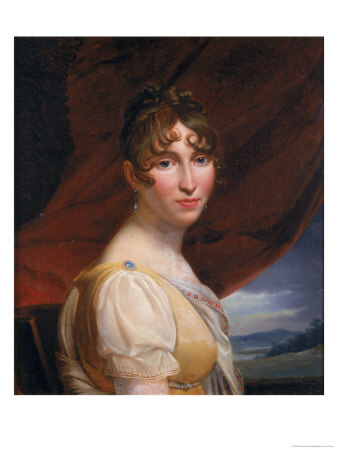
I’m back in the Napoleonic era after more than a decade away, writing about Josephine Bonaparte’s daughter Hortense. It’s a familiar world, but it’s also quite new to me, because this is a Young Adult novel. I’m finding it creatively stimulating to be tackling a new genre.
The novel is written from Hortense’s point-of-view during her teen years, and is therefore an entirely different perspective from that of her mother, who is the point-of-view character of my Josephine B. Trilogy.
Delving back into a once-very-familiar world has been an interesting—and pleasant—experience. The late 18th century feels so modern compared to the 17th! (The setting for my last two novels.)
Having previously immersed myself in the Napoleonic era for near-on two decades, one would think I wouldn’t have to do very much research. Wrong! There are new books and studies available, and there’s a ton more information on line. Although I have quite a leg-up (a 556-page timeline—single space, small type—for starters, and stacks and stacks of files), there is no such thing as no need to research. In any case, how can one resist?
Tomorrow: How does my work differ from other work in its genre? This, as you can imagine, is a thought-provoking question!
SaveSave
SaveSave
by Sandra Gulland | Jul 10, 2013 | Adventures of a Writing Life |

My most treasured acquisition this year was a limited edition copy of THE PARADISE PROJECT by my good friend and brilliant writer Merilyn Simonds.
That my copy was #1 (!!!) makes it extra special, but this beautiful book is beyond extra special: end papers made from the flowers in Merilyn’s garden, a special plant-related cover paper, block prints by her artist son throughout, pages that need to be sliced open to read: yes, very special indeed.
And now, a video of that final day, as Merilyn’s husband, writer Wayne Grady, reads a poem he wrote: “We’re putting the press to bed.”
Everyone knew it was a special moment … as is each moment you hold this lovely book, as is each word you read.

And now, a brief catch-up in GullandLand: I’ve worked myself up to 1000 words a day on the first draft of the Young Adult novel about Hortense. It’s fun, and I’m enjoying it. I’m writing every day, which is key—on “free” days I commit to 100 or 500 words. No excuses!
Any day now I’ll see a cover for THE SHADOW QUEEN. ARCs (Advance Reader Copy) are in preparation. I survived the massive Author Questionnaire. Now it’s time to start thinking about acknowledgements. (Always the last bit to be written.)
I’m reading massively: Pride and Prejudice, Astray, The Dark, plus any number of How To books and research texts on my Kindle ap.
by Sandra Gulland | Jun 16, 2013 | Adventures of a Writing Life |
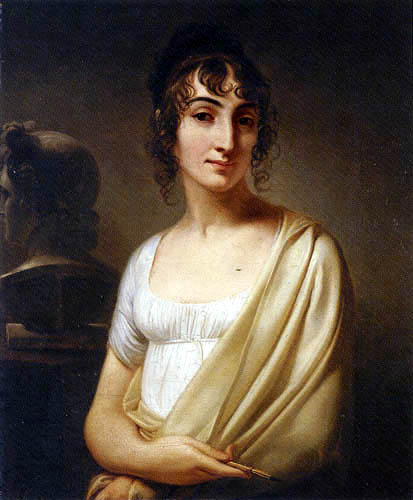
I’ve begun to gallop along on the YA about Hortense. I’m still struggling with the plot, but nonetheless I’ve started falling into scenes, letting them flower. The processes for plotting and writing are different (plotting is so very cerebral), so it’s not a bad idea to do them simultaneously.
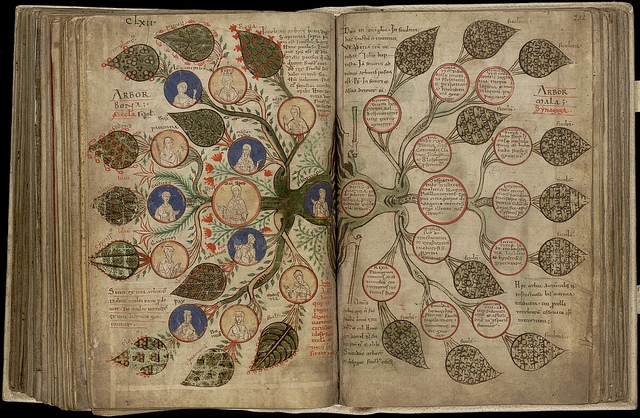
Needless-to-say, I’m busy. There is nothing quite like the absorption of the early stages of a novel to make one just a little forgetful.
Recommended this week: “How to shop at a bookstore: an easy 20-step guide for authors.” This is hahahaouch funny & sad. The one thing I would add is that writers give consideration to appearance before going up the the counter and offering to sign a book. If I’m looking somewhat grubby, I will pass.
The article made me nostalgic. I remembered walking by a bookstore just before I was first published, realizing that I would never again go into a bookstore as a carefree-wandering-reader. Once published, there’s a working relationship. A delicious working relationship, but a working relationship nonetheless.
The copy-edit of The Shadow Queen is now back with Doubleday. I always find it surprising how emotionally tangled up I can get over whether a word is capitalized or not.

Now I’ve the beastly Author Questionnaire to finish filling out. The required AQ is perhaps the best reason to stay with one publisher! On the first page (of many pages): list every edition of every book you’ve ever published in all languages. No. No. No.
The catalogue copy of The Shadow Queen for HarperCollins needed some tweaking. (The title was wrong, for starters.) Here’s what we’ve got now for a “shout line”:
A seductive, gripping novel about the lure and illusion of power, and the plight of a woman caught up in the deadly black magic of the woman she loyally serves: the Shadow Queen.
Shout lines are damn hard … Some suggest that you begin writing the shout line at the same time you begin writing the novel.
As usual, I’m reading too many books at once. (A little ADD anyone?) Pride and Prejudice, as well as a book about Jane Austen—as mentioned in my last blog. Tiny Beautiful Things by tell-it-like-it-is Cheryl Strayed. Astonished, by my friend (and fantastic writer) Beverly Donofrio. A historical novel for a blurb—I don’t recall the title, but I’m enjoying it very much. Manage Your Day-to-Day by Jocelyn K Glei, for obvious reasons.
Etc. etc. etc. If only I had five lives.

And … how could I forget! I’m nearing the end of Henderson the Rain King by Saul Bellows. Primal lion screaming! I read that Joni Mitchell was inspired to write “Both Sides Now” reading this amazing novel. I read it in my teens and loved it. Although I found it a little thick in the middle, it still has incredible power.

At the top, a very unusual portrait of Hortense by Appiani. Antique images from BibliOdessy.
SaveSave
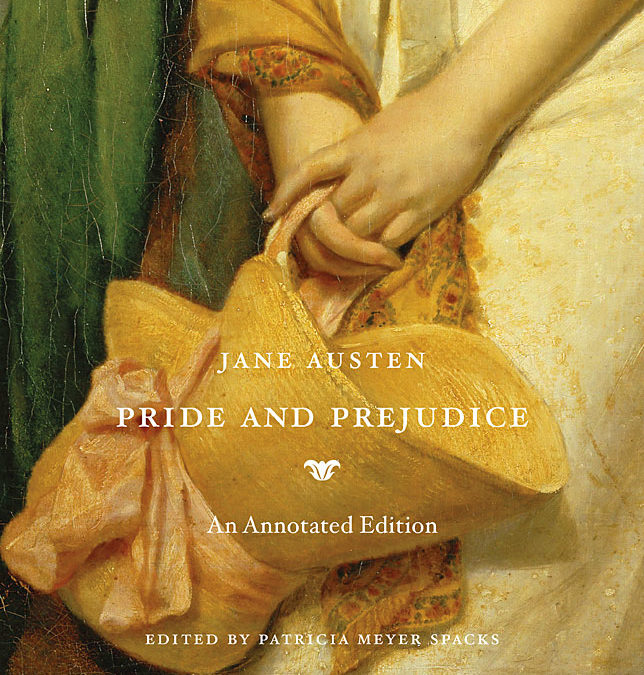
by Sandra Gulland | Jun 6, 2013 | Adventures of a Writing Life, On Research, The Game of Hope, The Writing Process, Young Adult Literature |
As research for writing a YA about Hortense, I’m reading a lot about Jane Austen right now—or, at the least, I seem to be surrounded by books and blogs about her. Yes, I admit, I’m seeking her out.
For example, this wonderful website: What Jane Saw, an exhibit she actually went to see. Follow in her footsteps; look at the paintings she saw.
I’m reading—very, very slowly—the Harvard University Press annotated edition of Pride and Prejudice (shown above). This is a sumptuous book, a sumptuous series. (For a video on this book: click here.)
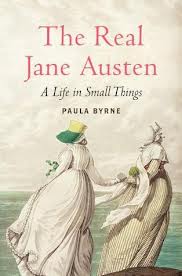
Another book I’m reading is The Real Jane Austen: A Life in Small Things by Paula Byrne: delicious.
And another: A Dance with Jane Austen by Susannah Fullerton, which I discovered through the wonderful blog Jane Austen’s World. This is a wonderful book.

“Why Jane?” my son asks, and I have to tell him frankly that I don’t think she’d be his cup of tea. But then neither might be Dickens or Shakespeare, at least not in his fast-paced world. In a University course: certainly. And then, forced into another time and pace (the beauty of higher education), he might think, “Wow.” For she’s right up there with the greats of literature.
This in spite of the fact that she is so very subtle, so not showy. Who was it who said—I think it was Virginia Woolf—that it’s very hard to catch Jane Austen in an act of greatness.
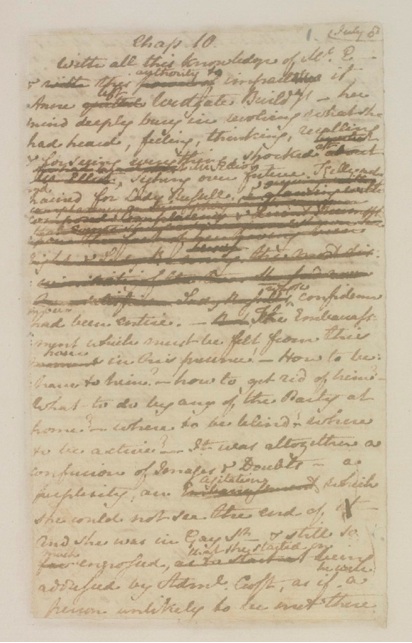
She wrote during the day, and read what she’d written to her family in the evening. She did not have a desk of her own, much less a room.
It’s a mistake to think that her’s was a purer world. The worlds she created are pure, yet a man she and her sister admired, a nobleman, had a strange affection for drinking the blood of his servants. (Note that such details do not show in her novels.)
For Mother’s Day, my son suggested I pick a t-shirt from this wonderful site: Out of Print Clothing.
Which one did I pick? Well, of course: Pride and Prejudice:

I love it! (And no: this is not me.)
What’s your favourite Jane Austen? And why?

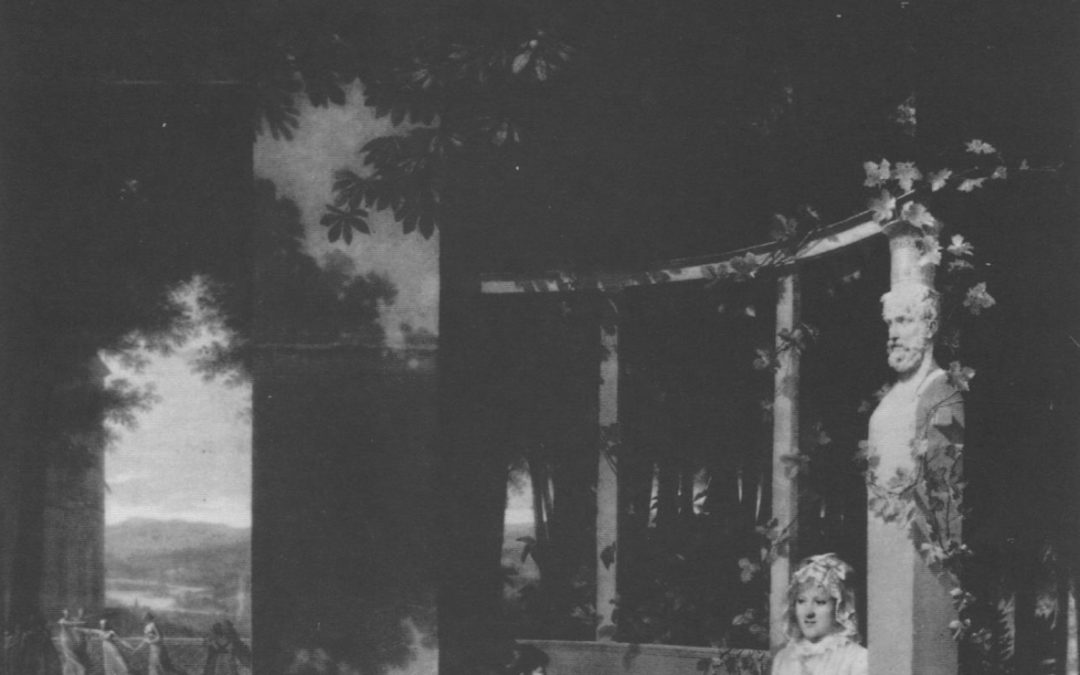
by Sandra Gulland | Jan 3, 2013 | Baroque Explorations, On Research, The Game of Hope |
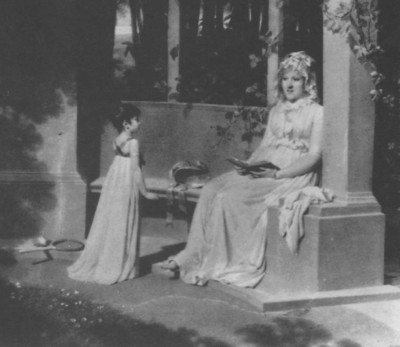
On July 31, 1794, Madame Campan opened her boarding school for girls on rue de Poissy in Saint-Germain-en-Laye, a town not far from Paris.
In the spring of the following year, on May 25, she rented Hôtel de Rohan on 42, rue de l’Unité—now 42, rue des Ursulines—opening the school there on July 1, 1795.
Two months later, on September 1, Josephine de Beauharnais (soon to marry and become Josephine Bonaparte) enrolled her daughter Hortense and her niece Émilie. Her son Eugène was enrolled in a school for boys next door.
Images of the former Hôtel de Rohan
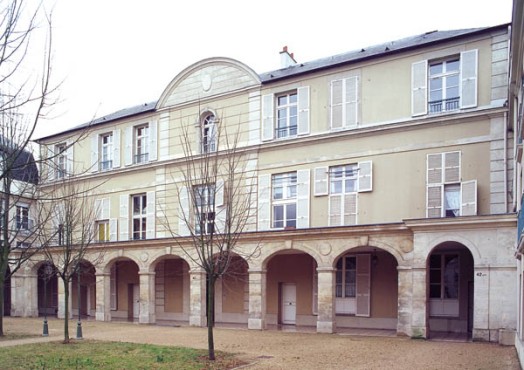
The French government provides all sorts of information on historical sites. This one is a treasure of information and images:
Here is a map detail from the mid-18th century:
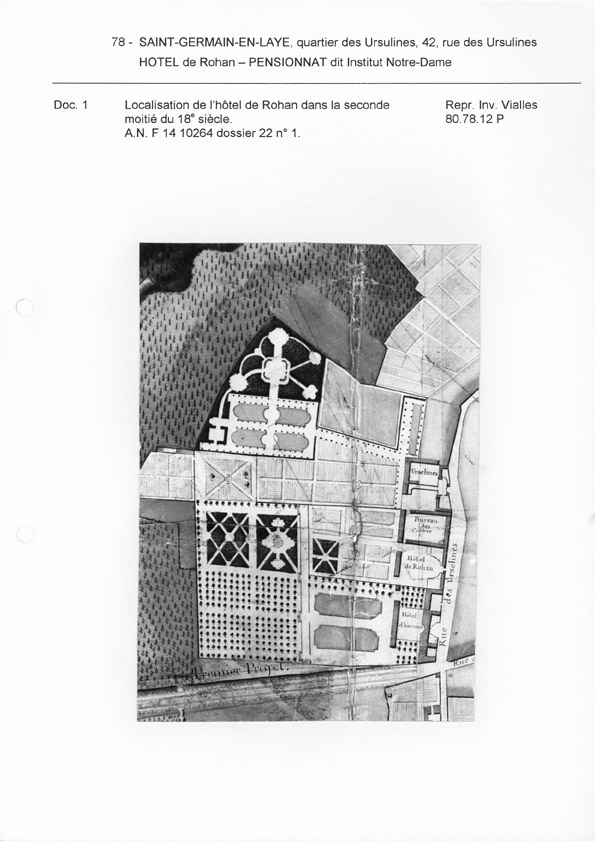
And another one from 1820:
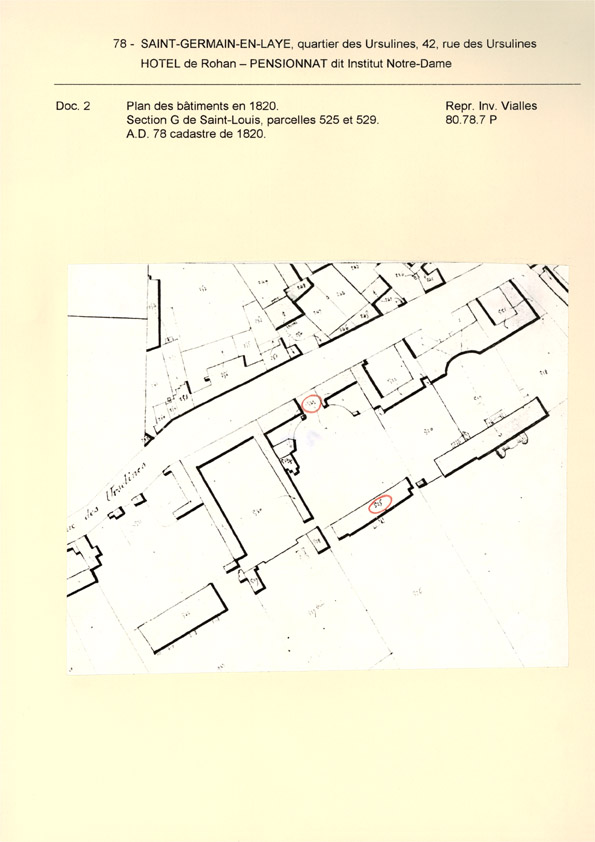
The inner courtyard (mid-19th century):
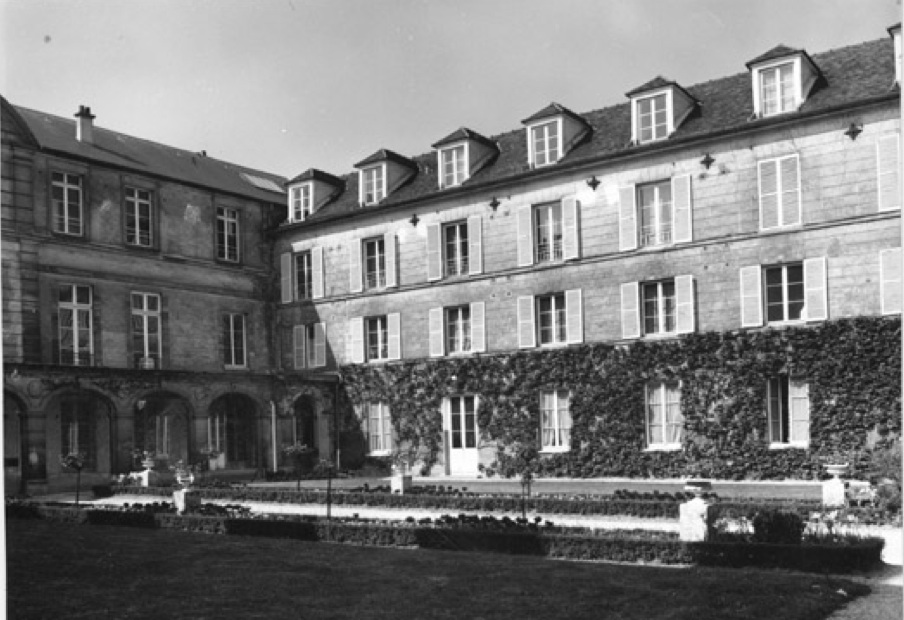
The basin in the entry:
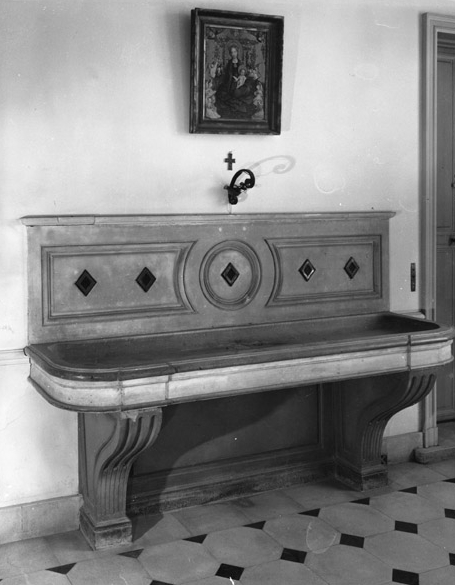
You can see it filled with plants here:
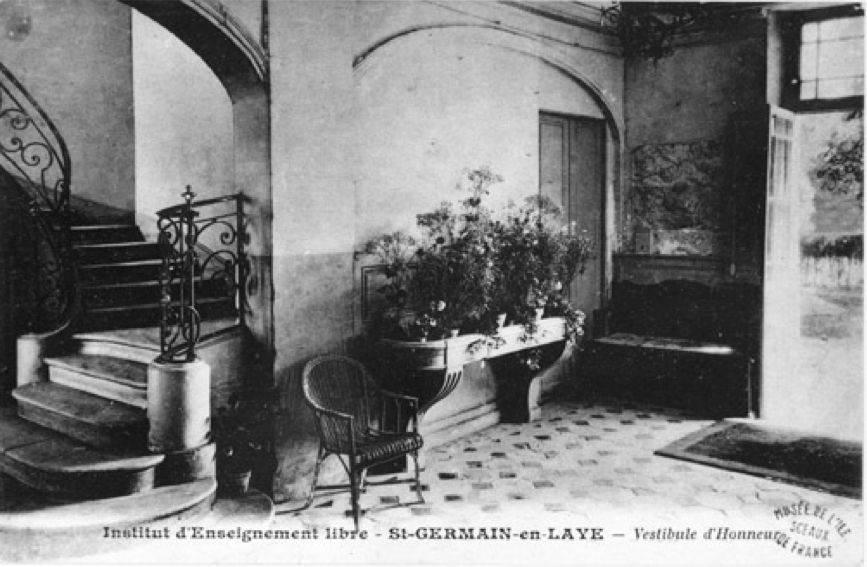
And here’s a detail of the staircase:
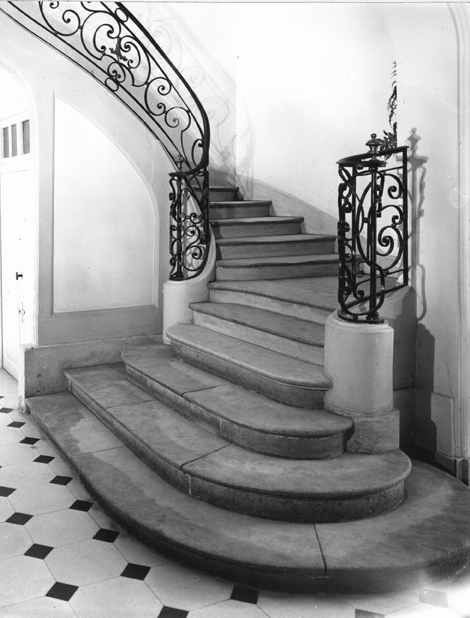
The “school” today
The former Hôtel de Rohan is now an apartment block. On a research trip in 2014, a former resident of the apartments was kind enough to show me in to see what remains of Madame Campan’s school.
Much of it is new, but there are some remnants of the former Hôtel de Rohan:
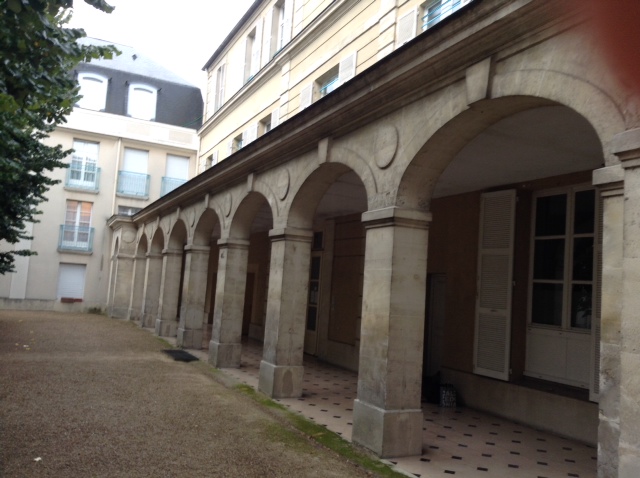
In the back garden, there was this intriguing bit of antiquity:

A bit of the former chapel, perhaps? One can only guess.
Here is the layout of the apartment complex, “Le Parc des Ursulines.” The photo of the arches above are where the “I” is on this plan. The grotto is in the garden beyond.
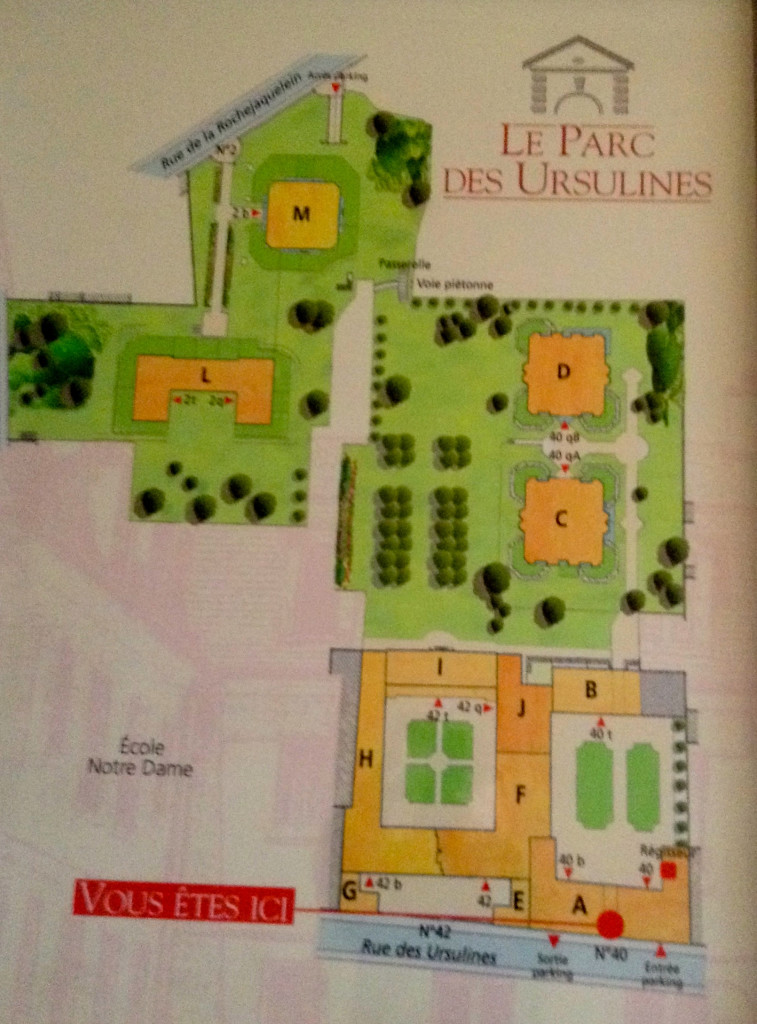
On the name of the school
How was Madame Campan’s school referred to at the time? Here are two possibilities:
L’Institut National des Jeunes Filles/National Institution for Young Women
I’ve also seen (but only in English): National Institution for the Education of Young Women.
l’Institut national de Saint-Germain/The National Institution of Saint-Germain
I have doubts about this last name because during the Revolution the name of Saint-Germain-en-Laye had been changed to Montagne-Bon-Air. It was changed back to Saint-Germain-en-Laye 28 février, 1795, but would Madame Campan have been so bold as to use the former aristocratic name immediately?
SaveSave

























